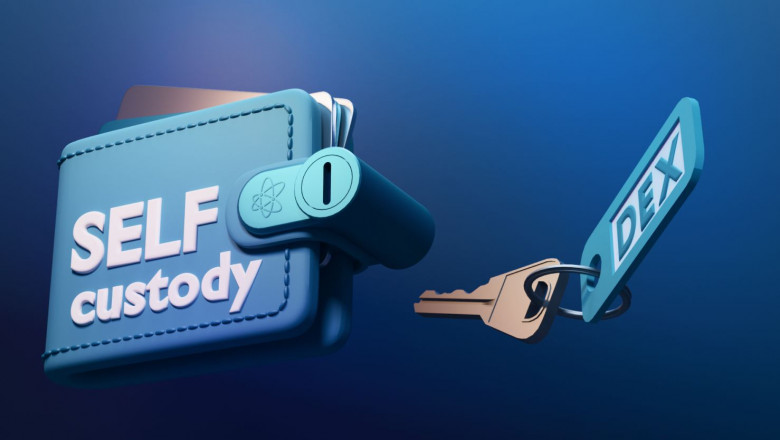views
As the crypto industry matures and becomes more tightly integrated with mainstream finance, one foundational question continues to dominate conversations among both new investors and veterans: how can I protect my crypto assets from loss, theft, or seizure? While innovation surges in DeFi and blockchain scalability, the conversation around security has never been more urgent. In 2025, the smartest crypto move isn’t just about what you invest in it’s how you hold it.
That’s why an increasing number of investors are seeking out the best cold wallet to safeguard their digital assets. Unlike online wallets, cold wallets store your private keys offline, immune to phishing attempts, centralized exchange failures, and malware attacks. With incidents like exchange bankruptcies and wallet-draining browser extensions still making headlines, moving assets offline is no longer just for whales or early adopters—it's quickly becoming a basic best practice.
1. 2025: A New Era of Crypto Threats and Responses
Last year saw several high-profile security breaches in the crypto ecosystem. From the $126 million hack of a cross-chain bridge to multiple DeFi protocol exploits and social engineering scams, one message was loud and clear: relying solely on custodial services and hot wallets exposes users to significant risk. According to a 2024 report by Chainalysis, over $1.9 billion in crypto was stolen across both centralized and decentralized platforms.
Amid this increasingly hostile landscape, the move toward self-custody is accelerating. Investors are growing skeptical of entrusting centralized exchanges or third parties with private keys, especially as regulatory scrutiny tightens and some jurisdictions begin imposing withdrawal limitations or even asset freezes under certain conditions.
2. The Rise of Self-Custody as a Default Mindset
The ethos of self-custody is nothing new in crypto. "Not your keys, not your coins" has been a mantra since the early days of Bitcoin. But in 2025, it’s not just ideology—it’s a pragmatic response to mounting risk.
Self-custody tools have improved dramatically over the past few years, shedding their formerly complex interfaces and clunky UX. Today’s cold wallets are sleek, mobile-integrated, and built with the average user in mind. Some even support biometric authentication, mobile connectivity via QR codes, and integration with multichain portfolios all without compromising security.
This evolution has lowered the barrier to entry, making it easier for retail investors to store their tokens with the same level of security once reserved for institutional players.
3. Market Data Confirms the Shift
Industry data backs up this behavioral shift. According to a 2025 study from Messari, over 60% of surveyed crypto users now store the majority of their holdings in some form of cold storage. That number was just 38% in 2022.
Additionally, sales of hardware wallets have surged year-over-year, especially in emerging markets where banking systems remain fragile or access to reliable internet can be intermittent. In such regions, having a portable, offline means of securing digital wealth is not just a convenience it’s a necessity.
4. What Investors Should Look For in a Cold Wallet
With so many new cold storage solutions entering the market, choosing the right one can be overwhelming. While personal preferences vary, there are a few key features investors should prioritize:
-
Security Architecture: Look for secure elements (SE), hardware-based encryption, and physical tamper resistance.
-
Cross-Chain Compatibility: As portfolios diversify, it's critical that your cold wallet supports Bitcoin, Ethereum, Solana, and a range of ERC-20 tokens at a minimum.
-
Recovery Mechanisms: A strong recovery process, including options like Shamir Backup or seed phrase segmentation, ensures that asset access isn’t lost due to device failure or theft.
-
User Experience: Whether you’re tech-savvy or a beginner, the UI/UX should be intuitive, with clearly labeled transaction prompts and seamless mobile integration.
5. The Growing Role of Multi-Sig and MPC Solutions
Cold wallets aren’t just for individuals anymore. DAOs, family offices, and crypto-native companies are leveraging multi-signature (multi-sig) and multi-party computation (MPC) technologies to create advanced cold storage frameworks. These models require multiple approvals for a transaction to go through, reducing the risk of a single point of failure.
Platforms like Gnosis Safe and Fireblocks are already widely used in institutional circles, and their integration with mobile cold storage systems is creating new possibilities for secure asset management at scale.
6. Legal and Regulatory Considerations
One overlooked benefit of cold wallets is their alignment with growing legal uncertainties around custody. In jurisdictions where regulators are tightening controls on custodial services, holding your own keys can provide a buffer against unexpected account freezes, tax scrutiny, or KYC-based limitations.
However, users must also be aware that with self-custody comes responsibility. Losing your seed phrase or mishandling your device could lead to permanent loss. The future of crypto custody may lie in hybrid models—solutions that preserve autonomy while offering opt-in recovery frameworks or social backup systems.
7. Educational Momentum Fuels the Trend
Crypto influencers, security experts, and even institutions are now prioritizing education around wallet security. Social media platforms and YouTube are flooded with tutorials on how to set up, manage, and back up cold wallets securely. Conferences like ETHDenver and TOKEN2049 are hosting entire panels focused on improving user literacy around self-custody.
Final Thoughts: Your Crypto, Your Rules
The move toward self-custody is not just a response to past failures it’s a bet on the future of personal finance. As centralized exchanges face existential threats from both regulators and hackers, the smart money is migrating to secure, offline storage.
Cold wallets empower users to reclaim control over their assets, but that power comes with responsibility. The good news? Tools have never been more accessible, and the knowledge gap is closing fast.












Comments
0 comment